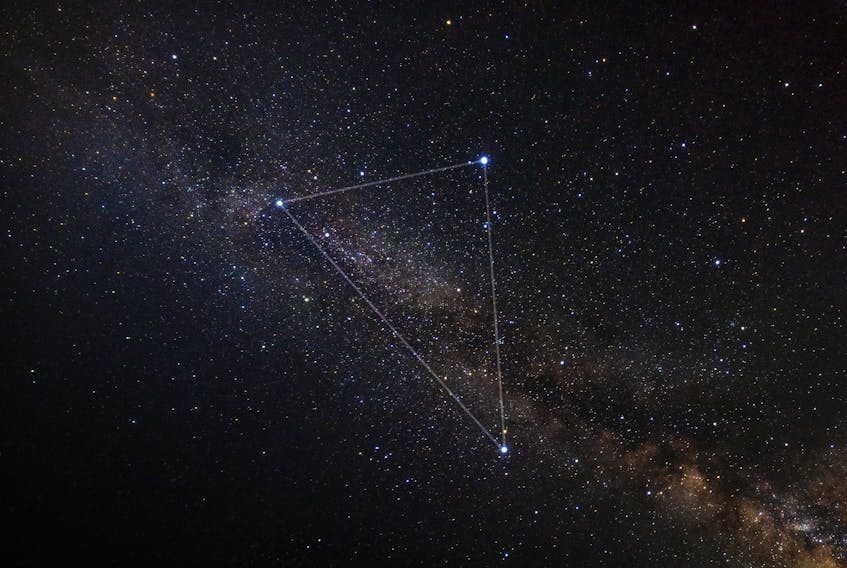
Hurray, summer is finally here!
Well, it doesn't officially happen until June 21, but the weather certainly feels more summer-like than it has for the past few weeks.
The summer solstice occurs at 12:54 p.m. ADT on that date, marking the official commencement of summer here in the northern hemisphere (winter in the southern hemisphere). It also marks the longest day of the year, and, subsequently, the shortest night.
The celebration of the summer solstice has a long history, spanning many centuries and countless global cultures, where ancient peoples used the summer solstice to organize their calendars, work out when to plant crops and, in general, to celebrate the end of the cold and confining weather of winter and spring. The ancient Celts of Europe are said to have celebrated the arrival of summer by dancing around huge bonfires.
Unfortunately, for most people around the world nowadays, it is just another day, and though they mentally welcome its arrival, there are few, if any, large, public celebrations. However, in the northern European countries of Sweden, Denmark, Finland and Norway, the summer solstice is still celebrated with large, public festivals that often incorporate music and dancing around a maypole.
At the famous, neolithic Stonehenge circle in Wiltshire, England, celebrants annually gather, with much merriment and fanfare, to watch the sun rise above the horizon between two of the henge's huge stone monoliths on the solstice.
With the return of summer, and the summer constellations to our night sky, there is a particular geometric shape that is visible in the night sky at this time of the year. The Summer Triangle, a triangular-shaped asterism, can be formed by joining the three brightest stars Deneb, Vega and Altair in the constellations of Cygnus (the Swan), Lyre (the Harp) and Aquila (the Eagle) respectively. Look for the Summer Triangle directly overhead on any clear night throughout the summer months.
Events:
- June 17 - Full moon
- June 21 - Summer solstice; 12:54 p.m. ADT
- June 23 - Moon at apogee (farthest from Earth)
- June 25 - Last quarter moon
It is located in a star-rich portion of our galaxy's Milky Way – a broad, murky, diffuse band of stars (appearing like spilt milk) and dust clouds stretching across the night sky from the northeast to the southwest (a beautiful sight in binoculars). Vega (mag. +0.03) is 25 light-years from Earth, with Deneb (mag. +1.25) at 3,550 light-years and Altair (mag. +0.77) at 16.6 light-years. A light-year is how far light travels across the vacuum of space in one Julian calendar year (365.25 days), approximately 9.46 trillion kilometers. It is a measure of astronomical distance, not time.
On the nights of June 15-16, the waxing, gibbous moon, Jupiter (to lower left) and Antares (the bright "heart" star of Scorpius - the Scorpion, to the lower right) form a triangle in the southeast sky about an hour after sunset. The following evening, the near-full moon has moved to the lower left of Jupiter, with the three celestial objects now forming a shallow arc across the night sky, before setting in the southwest just before dawn.
The evening of June 18 will see the moon (one day past full) and Saturn (just above the moon) rise in tandem (less than one degree apart) in the south-southeast sky. Look for the "teapot" asterism in Sagittarius - the Archer to the right. On that same evening, just after sunset, Mercury (now at mag. +0.1) and Mars (mag. +1.8) are visible extremely close together in the west-northwest sky – an excellent photo-op. Mercury reaches its greatest eastern (to the left of the sun) elongation (angular distance between Mercury and the Sun as seen from Earth) on June 23, necessitating binoculars to locate it amid the evening gloaming. Venus (mag. -3.8) continues to rise in the east-northeast sky about one hour before sunrise through the balance of June.
The Algonquin tribes of North America referred to June's full moon (June 17) as the strawberry moon because this was the month when the wild strawberries were plentiful. European settlers to North America referred to it as the rose moon, the month when most roses began to bloom.
Until next time, clear skies.
Glenn K. Roberts lives in Stratford, P.E.I., and has been an avid amateur astronomer since he was a small child. His column, Atlantic Skies, appears every two weeks. He welcomes comments from readers, and anyone who would like to do so is encouraged to email him at [email protected].
-
Read Glenn Roberts' May 29 column: ATLANTIC SKIES: Bright planets in late spring night sky









